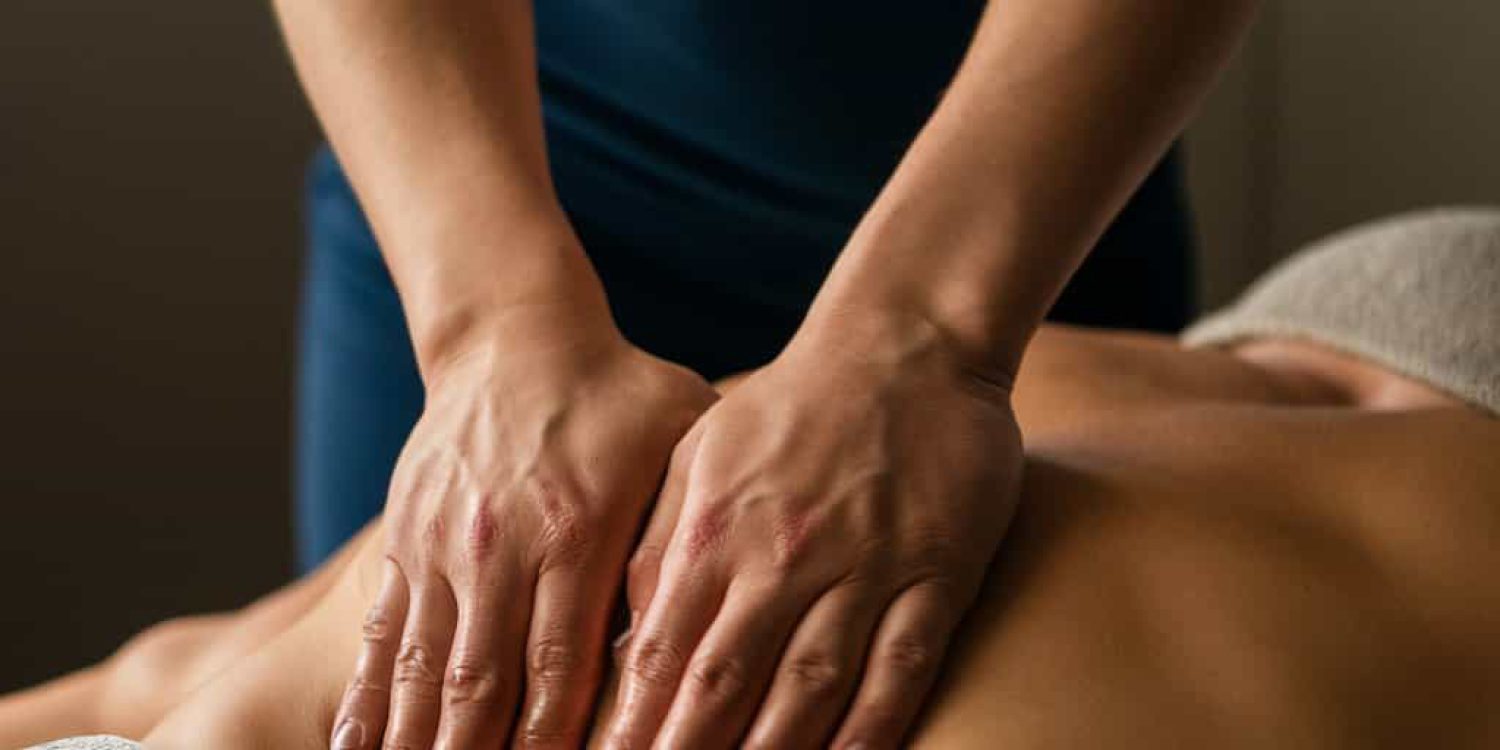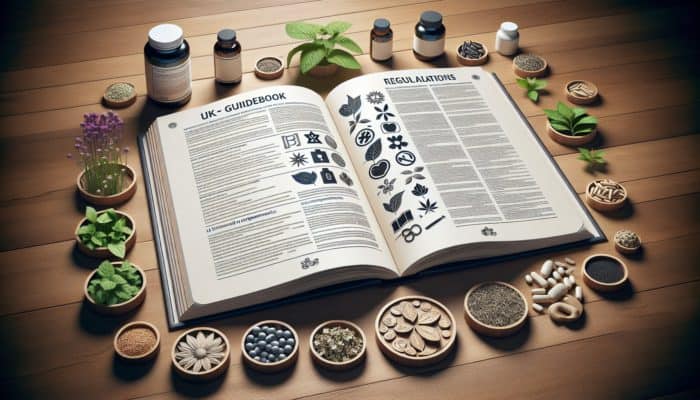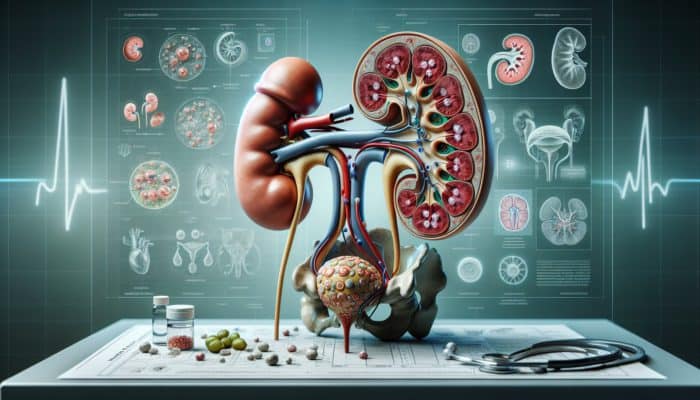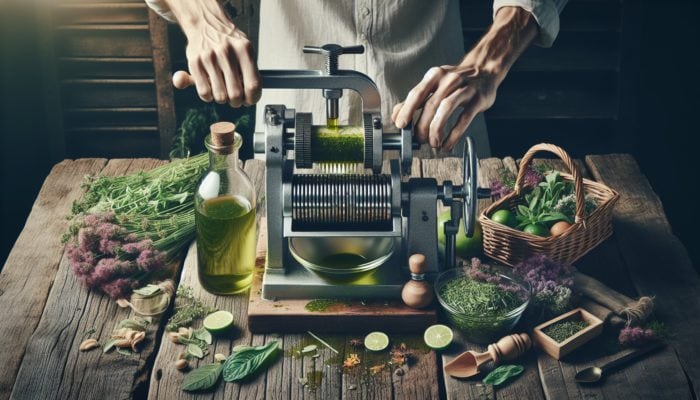Exploring Various Body Massage Techniques
Body massage has been used for generations to promote relaxation, reduce muscle tension, and enhance general well-being. Massage techniques vary to meet individual requirements and tastes, each offering its benefits and effects on the body and mind. This post examines the most common body massage techniques, such as Swedish, deep tissue, hot stone, shiatsu, aromatherapy, and sports massage.
Each methodology has its concepts and procedures, making it appropriate for different people and their unique requirements. There is a massage technique, whether you want to unwind and relax, relieve muscle pain, or improve athletic performance. Massage therapy is a delightful treat essential for preserving total health and wellness.
Touch has been shown to dramatically influence the body, lowering tension and anxiety while boosting circulation and fostering relaxation. Individuals can make informed decisions about which body massage technique suits their requirements and preferences by considering the various options. Whether you are a massage enthusiast or a first-time recipient, this article will supply you with vital information about the world of body massage and its many benefits.
Important Things to Remember
- Body massage techniques encompass a variety of methods to promote relaxation, pain relief, and overall well-being.
- Swedish massage is a gentle and soothing technique focusing on relaxation and reducing stress.
- Deep tissue massage targets muscle tension and pain relief by applying firm pressure to release knots and tightness.
- Hot stone massage uses heated stones to relax muscles, improve circulation, and promote a sense of calm and well-being.
- Shiatsu massage applies pressure to acupuncture points to restore balance and promote healing in the body.
 Swedish Massage: A Relaxing and Soothing Technique
Swedish Massage: A Relaxing and Soothing Technique
Techniques and Benefits
This technique uses a variety of strokes to massage the body's soft tissues, including kneading, tapping, and circular movements. Swedish massage relieves muscle tension, enhances circulation, and provides a deep sense of relaxation. Reducing tension and increasing feelings of calmness are two of the main benefits of Swedish massage.
Relaxation and Calming Effects
The smooth, flowing strokes soothe the nervous system and remove muscle tension, allowing the recipient to experience deep relaxation. Additionally, Scientific studies have shown that Swedish massage improves circulation, which has far-reaching effects on health.
Overall Well-being
Swedish massage, which increases blood flow to the muscles and tissues, can assist in flushing out toxins and promote healing in the body. Swedish massage is a beautiful choice for people who wish to relax, de-stress, and improve their general well-being.
Deep Tissue Massage: Targeting Muscle Tension and Pain Relief
Deep tissue massage is a therapeutic massage that focuses on the deeper layers of connective and muscle tissue. This technique is beneficial for people with persistent muscle tension or pain since it addresses specific areas of discomfort with firm pressure and slow strokes. Restoring movement and easing discomfort requires a deep tissue massage to disintegrate muscle and connective tissue adhesions.
Deep tissue massage, which applies prolonged pressure with slow, deep strokes, can help ease muscle tension, reduce aches and pains, and increase mobility. One of its critical advantages is its ability to target specific points of muscular tension and discomfort. Swedish massage is known for its calming and therapeutic effects, but deep-tissue massage relieves persistent muscle pain and tension.
A deep-tissue massage is an excellent option for people with chronic back discomfort, neck pain, or sports-related injuries. It has been shown to improve blood flow and reduce inflammation, contributing to overall pain alleviation and improved mobility. While it may be more intense than other treatments, deep tissue massage can significantly relieve those with persistent muscle tension and discomfort.
 Hot Stone Massage: Using Heat to Relax Muscles and Improve Circulation
Hot Stone Massage: Using Heat to Relax Muscles and Improve Circulation
One unusual method is hot stone massage, which uses smooth, hot stones to relax and soothe the muscles. The therapist applies heated stones to particular spots on the body to encourage relaxation and circulation. Since the stones are heated, they ease muscle tension, allowing the therapist to increase the pressure as needed.
A hot stone massage is well-known for its soothing properties, alleviating muscle tension, and enhancing overall circulation. Its key advantage lies in its profound ability to promote relaxation and reduce stress. The combination of heat and moderate pressure effectively soothes the muscles and calms the neurological system, facilitating deep relaxation for the recipient.
Furthermore, hot stone massage increases circulation by expanding blood vessels and improving blood flow. This can improve overall health and well-being by improving the body's tissue oxygen and nutrition delivery systems. Generally, hot stone massage is a fantastic option for people wishing to relax, de-stress, and increase general well-being through heat treatment.
Shiatsu Massage: Applying Pressure to Acupuncture Points for Balance and Healing
Shiatsu massage, a traditional Japanese method, involves a therapist who uses their fingers, thumbs, and palms to apply rhythmic pressure to specific acupressure spots on the body's meridians. This technique, aimed at achieving balance and healing, is a testament to the connection between the therapist and the client, as it seeks to relieve stress and restore energy flow throughout the body.
Shiatsu massage relieves stress, reduces muscle tension, and promotes general relaxation. It also promotes balance and harmony in the body. Shiatsu massage, which targets specific acupressure points, can help relieve tension and restore energy flow across the body's meridians.
This can significantly impact general health by encouraging a sense of balance and harmony in the body. Shiatsu massage has also been proven to relieve muscle tension and stress, making it ideal for anyone seeking to unwind and relieve stress. Overall, shiatsu massage takes a unique approach to encouraging relaxation and well-being by applying pressure to specific body areas.
Aromatherapy Massage: Combining Essential Oils with Massage for Physical and Emotional Benefits
How Aromatherapy Massage Works
An aromatherapy massage involves the therapist incorporating aromatherapy oils into the massage lotion or oil that the therapist uses. As the receiver inhales the aroma of the essential oils, they receive a light massage, providing both physical and mental benefits.
Benefits of Aromatherapy Massage
Aromatherapy massage is well-known for its ability to reduce stress, relieve muscle tension, and induce relaxation using essential oils. The inhalation of essential oils has been demonstrated to significantly impact mood and emotions, making aromatherapy massage a good alternative for anyone wishing to decrease stress and promote relaxation.
Alleviating Muscle Tension and Promoting Overall Well-being
Additionally, aromatherapy massage can help relieve muscle tension by combining moderate massage techniques with the therapeutic characteristics of essential oils. Whether you want to rest after a long day or relieve muscle tightness caused by stress or physical exertion, aromatherapy massage takes a comprehensive approach to improving general well-being with essential oils.
 Sports Massage: Enhancing Athletic Performance and Preventing Injury
Sports Massage: Enhancing Athletic Performance and Preventing Injury
Sports massage is a specialised method for improving athletic performance, preventing injury, and promoting recovery in athletes. This approach uses deep tissue massage, stretching, and joint mobilisation to target particular regions of muscular tension and discomfort associated with sports exercise. By treating athletes' specific demands, sports massage seeks to improve flexibility, alleviate muscle soreness, and boost overall athletic performance.
One critical advantage of sports massage is that it improves athletic performance by increasing flexibility and decreasing muscle soreness. Focusing on specific muscle stress points associated with athletic activity can assist athletes in maintaining peak physical condition and avoiding injury. Furthermore, sports massage has been demonstrated to accelerate recovery from strenuous physical activity by increasing circulation and lowering muscular inflammation.
Whether you're a professional athlete striving for peak performance or actively seeking to enhance your well-being, sports massage is a versatile and effective technique. It can help you become in better shape and perform better on the pitch.
Benefits of Body Massage: Stress Reduction, Pain Relief, Improved Circulation, and Relaxation
Body massage provides various far-reaching advantages, making it an effective technique for enhancing general health and well-being. By calming the central nervous system and releasing muscular tension, a full-body massage has the dual effect of reducing stress and increasing relaxation. This can significantly impact mental and emotional well-being by instilling a sense of peace and tranquillity.
Furthermore, body massage has been demonstrated to significantly alleviate pain for people with persistent muscle tension or discomfort. Deep tissue massage, for example, applies pressure with light, flowing strokes to painful places, reducing chronic pain and improving range of motion. Research has also shown that massaging the body's various parts increases blood flow, improving circulation.
Because toxins are eliminated and oxygen and nutrients may circulate more freely to the body's tissues, overall health can improve. Total body massage takes a comprehensive approach to promoting total health and well-being, addressing physical and emotional demands with techniques adapted to individual preferences.
FAQs
What are the different types of body massage?
Several different types of body massage exist, including Swedish, deep tissue, hot stone, aromatherapy, and sports.
What is Swedish massage?
Swedish massage is a gentle full-body massage that uses long, flowing strokes to promote relaxation and ease muscle tension. It is one of the most popular types of massage.
What is deep tissue massage?
Deep tissue massage focuses on realigning deeper layers of muscles and connective tissue. It benefits chronic aches, pains, and contracted areas such as stiff neck and upper back, lower back pain, leg muscle tightness, and sore shoulders.
What is hot stone massage?
Hot stone massage involves using smooth, heated stones placed on specific body parts to help warm and relax the muscles. The therapist may also use the stones to massage the body.
What is aromatherapy massage?
Aromatherapy massage incorporates the use of essential oils to enhance the massage experience. Essential oils achieve different effects, such as relaxation, energizing, or stress reduction.
What is sports massage?
Sports massage is designed to help athletes prepare their bodies for optimal performance, recover after a big event, or function well during training. It is also suitable for people with injuries, chronic pain, or restricted range of motion.
Brought To You By:
References
Deep Tissue Massage – Massage Jacksonville – MA52310. https://massage-jacksonville.com/deep-tissue-massage/
The Art of Massage: Exploring Different Techniques | Expert Wife. https://expertwife.com/25616-the-art-of-massage-exploring-different-techniques-14/


























44 Comments
It’s interesting how massage techniques can cater to such a wide variety of needs. Personally, I’ve found that deep tissue massage truly works wonders for my chronic muscle tension, especially after long hours at a desk. It’s fascinating to think about how the science of touch not only promotes relaxation but can also facilitate healing on a deeper level.
I completely relate to what you’re saying about deep tissue massage. It can really feel like a game changer, especially when you’re dealing with muscle tension from long hours at a desk. I’ve made it a bit of a routine for myself to get regular massages since I tend to hold a lot of stress in my shoulders and neck. It’s interesting how our bodies respond to touch—like they have their own language, almost.
It’s fascinating how our bodies respond to touch, isn’t it? It’s like they communicate their needs in subtle ways. I’m glad you’ve found a routine that keeps things at bay—consistent massages can really make a difference. I’ve noticed that maintaining a dialogue with my body has allowed me to become more aware of where I hold tension.
I can really relate to that feeling of needing regular massage. It’s amazing how much tension can build up without us even realizing it, especially when we’re wrapped up in work. I used to sit at my desk for hours on end, and it wasn’t until I started incorporating massages into my routine that I recognized how much I was holding in my neck and shoulders.
It’s striking how quickly we can forget about our bodies while getting caught up in our work, isn’t it? That buildup of tension can sneak up on us, often leaving us feeling drained without knowing why. I remember a time when I’d leave long hours at my desk, and the relief I felt after a massage was almost a revelation. It made me realize just how much I was carrying around in my shoulders and neck—areas that often get overlooked until the discomfort becomes too hard to ignore.
I can completely relate to that sense of tension sneaking up on us, especially with the demands of work today. It’s interesting how easily we adjust to stress without noticing. I’ve found that even just a few minutes of stretching or a quick walk during the workday really helps break up that built-up tension, too.
I totally get that struggle; I’ve found that regular massages really help release that built-up tension, and I recently came across some great insights that you might find helpful too.
‘Homepage’
https://mcrtherapies.co.uk/.
I can really relate to that feeling too. It’s interesting how easily we can get so caught up in work that we overlook the tension building in our bodies. I used to have a similar experience where I’d leave the office feeling completely drained without realizing how stiff my neck and shoulders had become. Once I started adding massages into my routine, I was amazed by the difference it made—not just physically, but mentally too.
You bring up a really important aspect of our relationship with our bodies—how they communicate through tension, discomfort, and, ultimately, relief. It’s fascinating to think about how we often overlook the signals our bodies send us until they become too loud to ignore. When we’re at our desks for hours, the physical stress accumulates silently until it manifests as aches, tightness, or even a complete shutdown. Many of us settle into that routine of ignoring it, thinking it’s just part of the daily grind, when in reality, our muscles are pleading for attention.
“Discover the unsettling truths behind the facade that so many choose to ignore; this exploration invites you to question the status quo and engage with a narrative that challenges the comfortable yet misleading assumptions we’ve grown accustomed to.”
https://mcrtherapies.co.uk/ig
You make such a compelling point about how our bodies communicate with us. It’s interesting to reflect on how easy it is to overlook those subtle signals until they escalate into something more pronounced. I’ve noticed that when I’m engrossed in work, especially while sitting for long periods, I often forget to check in with my body. It’s as if I become so immersed in my tasks that I ignore the tension building in my neck or the strain in my lower back.
You’ve touched on something many of us can relate to—the way deep focus can lead us to unintentionally neglect the signals our bodies send. It’s almost as if we enter a zone where task completion takes precedence over bodily awareness. While being engrossed in work can boost productivity, it often comes with a silent price: physical discomfort that can gradually escalate if left unaddressed.
It’s great to hear you relate to the deep tissue massage experience. It really can be a game changer, especially in a world where so many of us are glued to our desks for hours on end. I can totally sympathize with the tightness in the shoulders and neck; it feels like those areas become a magnet for stress. When I first started getting massages regularly, I was surprised at how much tension I was carrying around without even realizing it.
“Hey there! If you’re curious about diving deeper into some really awesome content, check this out—you won’t want to miss what’s waiting for you!”
https://mcrtherapies.co.uk/yt
It’s fascinating how each of us has our own unique relationship with massage and how it plays into our overall well-being. You mentioned feeling a game changer from deep tissue work, which really resonates. When you’re sitting for long hours, those shoulder and neck tensions can create a sort of pressure cooker effect. It makes sense that your body is responding by pressing back with discomfort.
It really is interesting how individual experiences shape our relationship with massage. For me, deep tissue work has been transformative, especially as I navigate the challenges of long hours at a desk. That “pressure cooker effect” you mentioned is so real—sometimes it feels like my body is holding all this tension like a tightly wound spring, just waiting for the right release.
It’s interesting how each person’s journey with massage can lead to different revelations. Your experience with deep tissue work highlights such an important idea—how our bodies often communicate their stress through tension. That feeling of being a tightly wound spring is something many can relate to, especially in our fast-paced lives.
It’s true—each person’s journey with massage really can reveal so much about how we handle stress. I remember the first time I tried deep tissue work; it felt like the therapist was peeling back layers not just of muscle, but of tension I didn’t even realize I was holding. It’s almost like our bodies have their own language, and it takes someone skilled to help us decode it.
You really hit the nail on the head there. That moment when a therapist starts working on those tight spots—and suddenly you realize you’ve been holding onto all this stress—is pretty eye-opening. It can feel like a lot of emotions surface that you didn’t even know were lurking beneath the surface.
“I completely resonate with that experience! If you’re curious to explore how these insights can enhance your own journey, check out our upcoming workshops and sessions.”
https://mcrtherapies.co.uk/ig
You captured that experience beautifully—it’s fascinating how massage can unlock parts of our bodies and minds we didn’t even know were tense. That peeling back of layers you described feels almost like a revelation; sometimes we carry stress so quietly that it becomes part of our daily lives without us realizing.
“Absolutely, it’s incredible how much our bodies communicate beneath the surface. If you’re curious to explore this journey further, check out our resources on deep tissue massage and how it can help you unwind and rediscover your body’s language.”
https://mcrtherapies.co.uk/fb
It’s so true how our individual experiences with massage really shape our approach to well-being. I’ve definitely felt that “pressure cooker effect” when sitting at my desk for extended periods. It’s interesting how our bodies send us signals; for me, it’s often tightness creeping in around my shoulders and neck, which I’ve learned to recognize as a call for attention rather than just something to push through.
I totally get what you mean about deep tissue massage being a game changer. There’s something almost miraculous about how a skilled therapist can work through those knots and tight spots, especially after hours hunched over a screen. It’s fascinating how our bodies really seem to hold onto stress, right?
I completely relate to your experience with deep tissue massage. It’s amazing how it targets those stubborn knots that form after sitting for hours on end. The pressure can feel intense, but that release afterward can be a game changer.
I know exactly what you mean about the pressure feeling intense during a deep tissue massage. It’s such a strange mix of discomfort during the treatment but pure relief afterward. I think it really highlights how our bodies can hold onto stress and tension, especially in a world where we’re often stuck sitting at desks for long periods.
You’re touching on something really important. That strange mix of discomfort and relief is such a fascinating aspect of deep tissue massage. It’s like our bodies have their own built-in memory of stress, and that tension can often feel like a physical weight we’re carrying around. Sitting at desks for long periods definitely doesn’t help; it’s easy to forget how much our posture and daily habits contribute to that buildup.
I completely agree—it’s fascinating how our bodies reflect the stress we carry. If you’re looking to experience that relief for yourself, check out these fantastic massage options that really target those tension spots!
https://mcrtherapies.co.uk/yt
You’ve tapped into something really intriguing about the therapeutic benefits of deep tissue massage, especially for those of us who spend long hours at a desk. The way our lifestyles can contribute to chronic tension is a reality many face, and it’s interesting how our bodies respond to that stress. Deep tissue massage, with its focus on the deeper layers of muscle and fascia, can break up that tension where it often feels most stubborn.
It’s such a relevant point you bring up about how our lifestyle choices directly impact our physical well-being. I’m often reminded of the way our modern work environment, with its long hours and sedentary habits, creates a breeding ground for tension and discomfort. It’s almost like we’ve accepted chronic tension as part of daily life, and it’s easy to overlook how our bodies are signaling us to make changes.
You’ve really hit on a key issue that so many of us are grappling with these days. Spending long hours at a desk can create not just discomfort but also a kind of silent stress that builds over time. It’s fascinating how our bodies bear the brunt of our lifestyles, isn’t it?
You’ve brought up a really important point about how our bodies respond to those long hours at our desks. It’s easy to overlook the impact that continuous sitting and a sedentary lifestyle can have on both our physical and mental well-being. You’re right—it’s more than just discomfort; it can create a kind of stress that’s almost insidious. The body accumulates tension in ways that we often ignore until it manifests as pain, fatigue, or even anxiety.
Absolutely, it’s intriguing how interconnected our daily habits and physical health are. If you’re looking for ways to ease that discomfort and stress, check out this resource that offers practical tips and solutions.
https://mcrtherapies.co.uk/ezi
You’ve hit the nail on the head about the subtle stress that comes from prolonged sitting. I’ve definitely felt that insidious tension building up over time, especially during the work-from-home days when I found myself glued to my chair for hours. It’s amazing how our daily habits can creep up on us and take a toll on both our bodies and minds.
You bring up a point that resonates with so many of us, especially in this new era of remote work. It’s easy to overlook how sitting for long stretches can impact us, both physically and mentally. Your experience echoes a reality many face: when work is just a few steps away, it’s all too tempting to stay in that familiar, comfortable chair longer than we should.
“I’m glad to hear you relate! If you’re looking for ways to ease that tension and boost your comfort while sitting, check out these tips that can help transform your work-from-home experience.”
https://mcrtherapies.co.uk/ig
You’ve really highlighted a pressing issue that resonates with so many of us who are tied to our desks for long hours. It’s astonishing how our modern lifestyles contribute to chronic tension. I’ve personally experienced the difference deep tissue massage can make; it’s like peeling off layers of stress that accumulate over time.
I completely relate to your experience with deep tissue massage. It’s remarkable how something as simple as touch can have such profound effects on our bodies and minds. After long hours at a desk, I often feel like my muscles are basically screaming for relief.
It’s great to hear that deep tissue massage has been working for your chronic muscle tension. It’s surprising how something as simple as touch can have such a profound impact on our bodies. I think a lot of people overlook the physical and mental benefits that massage can bring.
I’m glad you found deep tissue massage beneficial—it really can be a game-changer for chronic tension! If you’re interested in exploring more about the healing power of massage techniques, check out this insightful guide.
https://mcrtherapies.co.uk/ig
This overview of various body massage techniques highlights the importance of tailored approaches to wellness. I’ve always found that the choice of massage can significantly impact one’s experience – for example, after a particularly intense workout, deep tissue massage has been invaluable in alleviating muscle soreness and aiding recovery. Conversely, on days when I feel mentally drained, a gentle Swedish massage provides the calming effects I need.
You bring up a key point about how the right massage technique can vary based on our physical and mental states. It’s interesting to see how deep tissue can work wonders after a workout—the focus on muscle recovery is crucial, especially when you’re pushing your limits.
You bring up a key point about how the right massage technique can vary based on our physical and mental states. I’ve definitely noticed that too. After a tough workout, those deep tissue sessions feel essential for muscle recovery, but it’s also fascinating how our mental state influences the experience. When I’m feeling stressed, a lighter, more soothing massage can do wonders in grounding me.
I really resonate with what you’ve shared about the varying techniques and their impact on both physical and mental states. It’s interesting how our bodies can often dictate what they need at any given moment. After a strenuous workout, deep tissue massages feel almost like a necessity; it’s a way to really reconnect with our muscles and relieve that built-up tension.
You raise an interesting point about the connection between our physical and mental states when it comes to massage. It’s true that they’re not just separate entities working independently; they inform and shape each other in ways we often overlook. You’ve hit the nail on the head with the example of deep tissue massage after a tough workout. In those moments, when our muscles are screaming for relief, the right technique can make a significant difference not just in recovery, but in our overall mindset too.
“Absolutely! It’s amazing how our bodies and minds connect during a massage. If you’re looking for tailored techniques that suit your unique needs, check out these options that can help enhance your experience even more!”
https://mcrtherapies.co.uk/fb
You make an excellent point about the importance of tailoring massage techniques to our individual needs. After a tough workout, I’ve definitely felt the difference that deep tissue massage can make—not just in easing muscle soreness but also in enhancing my overall sense of well-being. It’s fascinating how physical recovery is often intertwined with mental recovery; navigating stress and pushing our limits can leave both the body and mind feeling worn out.
Your experiences with different massage techniques really resonate with me. It’s interesting how our bodies can respond so differently based on what we’ve been through, whether it’s physical exertion or mental stress. I’ve found that after a tough week, a hot stone massage helps to melt away tension in a way that feels almost transformative.
Your exploration of body massage techniques really strikes a chord, particularly in how diverse approaches can cater to individual needs and preferences. As someone who has experienced various types of massage therapy, I find the distinctions you made between techniques like Swedish, deep tissue, and shiatsu especially relevant. Each has its unique benefits and can address different concerns, whether it’s relaxation or intense muscle tension.
I appreciate your thoughts on the different massage techniques. It’s interesting how personal experiences shape our preferences. I’ve found that many people have a go-to style that resonates with them, but it can be eye-opening to try something new. For example, someone who usually opts for Swedish may find that a session of deep tissue really speaks to them after a workout.
I’m glad to hear that my exploration resonated with you! If you’re interested in diving deeper, I’ve put together a guide on finding the right massage therapy for your needs—check it out here!
https://mcrtherapies.co.uk/yt
This exploration of body massage techniques is truly insightful. I’ve always found that the type of massage I choose often reflects my current state—when I’m feeling particularly stressed, a Swedish massage tends to work wonders for relaxation, while after intense workouts, deep tissue therapy is my go-to to relieve soreness.
Your exploration of various body massage techniques highlights the profound impact that touch can have on our physical and mental well-being. I particularly resonate with the importance of choosing the right technique for individual needs. For instance, after experiencing chronic soreness from training, I found deep tissue massage to provide not only immediate relief but also enhanced muscle recovery.
It’s fascinating to see how massage techniques encompass such a wide array of benefits, addressing everything from relaxation to athletic recovery. Personally, I’ve found that integrating regular massage into my routine not only helps alleviate stress but also enhances my mental clarity.
It’s great to hear how massage has positively impacted your routine. I can totally relate; I’ve found that the benefits extend far beyond just physical relief. There’s something about that dedicated time to focus on oneself that fosters not only relaxation but also introspection.
I’ve found that exploring different therapies for sciatica, like those discussed in a recent article I read, aligns perfectly with the holistic benefits of massage, offering great insights for anyone looking to enhance their wellness journey.
‘Chronic Sciatica Relief: Therapies That Work’
https://mcrtherapies.co.uk/chronic-sciatica-relief-therapies-that-work/.